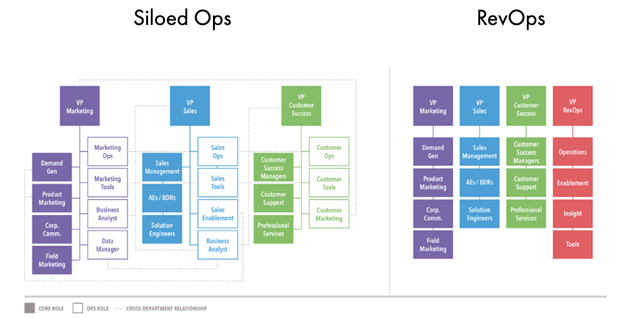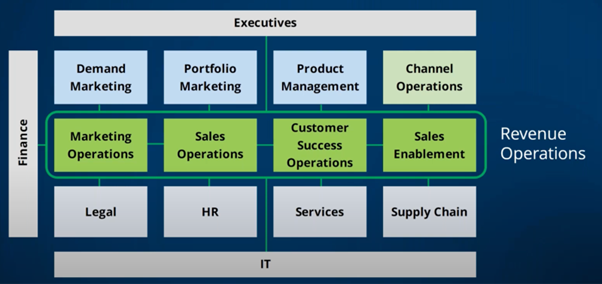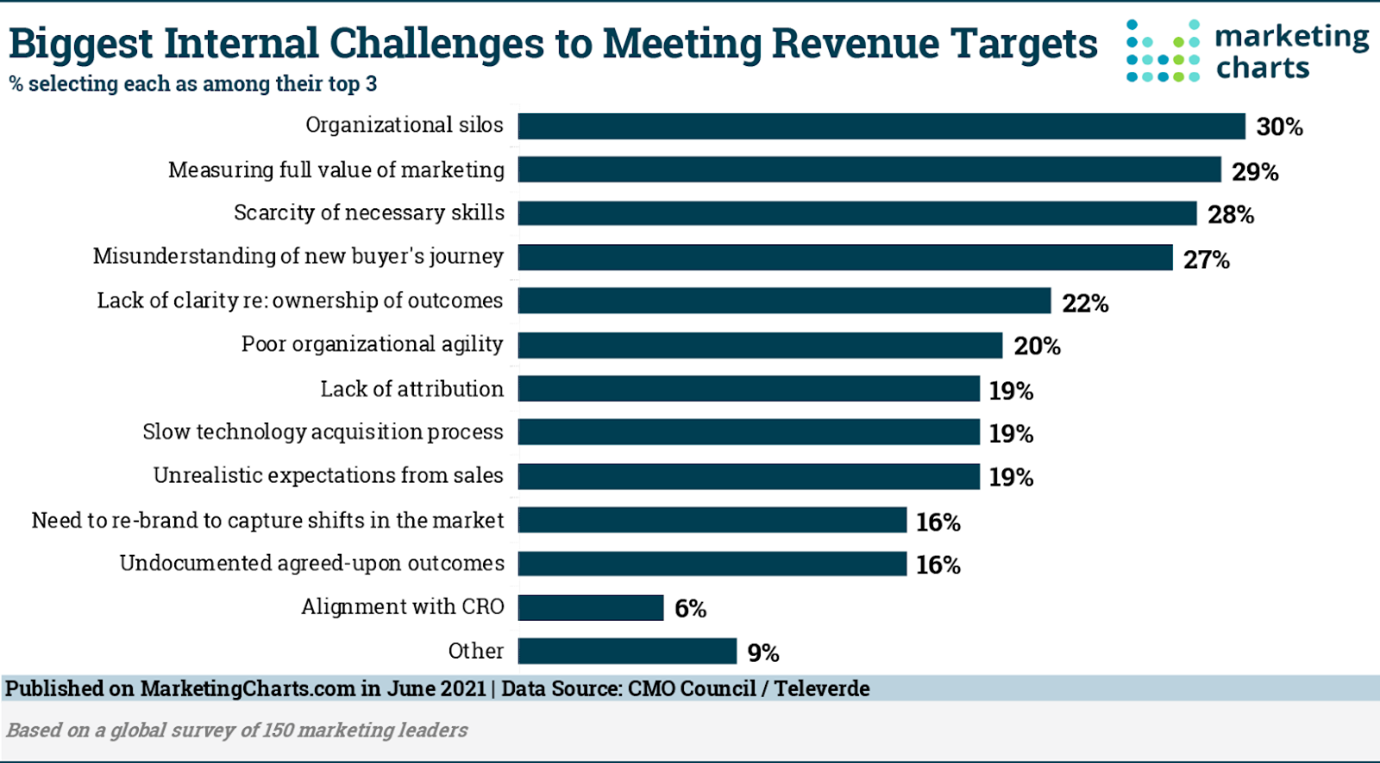
Sign up to receive latest insights & updates in technology, AI & data analytics, data science, & innovations from Polestar Analytics.
RevOps, or Revenue Operations is an approach that aims to align sales, marketing, and customer success teams within an organization. It involves breaking down silos between these departments and fostering collaboration to enhance customer experience. The idea is to capture the latent value that is often left on the table due to ineffective isolated departments.
Here is a Datasheet to get you started on your RevOps journey.
In this blog we will take a look at who are the leaders of Revops?, what responsibilities define the role?

Earlier, CMOs were give the task of taking the responsibility of aligning sales and marketing. But as organsiations grew, the role becomes so huge that a separate arm of RevOps had to be made. They are touted as the enabler of smooth functioning for consistent revenue growth.
Revops is primarily a funtion in the B2B space where, the significance of CLTV (Customer Lifetime Value) is paramount. As the liftime value of the customer is huge, the experienece they derive across departments has t be smooth. RevOps assumes the responsibility of strategizing and evaluating, freeing up revenue-generating divisions to concentrate on their core functions, unburdened by planning and optimization duties.
Now that we have understood the persona that drives the Revops engine lets dive into the KRAs.
Overall, RevOps aims to create a more efficient and effective revenue-generating engine within a company, with a focus on maximizing customer lifetime value and revenue growth.
The revops managers play a defining role in the aforementioned process while also taking care of the following key objectives. Each step in this process represents a critical stage in the customer lifecycle.
By diligently managing each of these stages, the RevOps manager plays a pivotal role in driving revenue growth and ensuring a positive customer experience, ultimately contributing to the growth of Revenue for the organization.

These responsibilities were developed after careful consideration of the factors that gave birth to the Revops as a function, its imperative to understand these problems in order to make sure that Revops teams are successful in delivering value.
The modern-day problems that RevOps teams address are:
Businesses are forward-looking, sales forecasts enable them to get a fair idea of the targets that need to be set for the next period. However, there is a likelihood that your sales and marketing efforts don’t meet the required targets.
When 150 leaders were surveyed about the topmost reasons for unmet targets, dismantling data silos, measuring the full value of marketing (ROMI), and understanding buyers' journey came out as the top reasons.

As you can clearly see, these align perfectly with the objectives of RevOps. Let us look at some research done by various organizations on Revenue Operations.
Get your copy today and Chart the Growth Waters of Revenue Growth Management.
DownloadResearch conducted by SiriusDecisions reveals that B2B enterprises that synchronize their revenue engine witness accelerated growth rates of up to 15%, coupled with a remarkable 34% increase in profitability when juxtaposed with their industry counterparts.
Furthermore, findings from the Aberdeen Group underscore that companies which establish robust alignment between their sales and marketing departments achieve a notable average annual revenue growth of 20%, in stark contrast to a 4% decline witnessed by those entities grappling with inadequate alignment.
According to insights provided by the Boston Consulting Group, the adoption of Revenue Operations (RevOps) yields substantial benefits, manifesting as sales productivity gains ranging from 10% to 20% for B2B technology firms.
It is noteworthy that the lack of harmony between sales and marketing alignment exacts a staggering toll, collectively costing companies more than $1,000,000,000,000 ($1 trillion) annually.
Now that we have conclusive evidence that Revops has been able to deliver value, lets take a look at how you can drive these teams and measure their performance.
From revenue forecast simulations for changing prices to behavioral analytics - we helped an Alcoholic Beverege giant increase 10% contribution to the revenue & increased market share.
CSAT (Customer Satisfaction) is crucial in RevOps as it serves as a direct gauge of customer contentment with the company's products or services. Its measurement provides actionable insights for refining strategies and processes across sales, marketing, and customer success teams, aligning efforts towards delivering exceptional customer experiences and driving revenue growth. High CSAT scores often correlate with increased customer retention and advocacy, making it a pivotal metric in the RevOps framework.
The primary goal for Revenue Operations is to drive predictable revenue while assessing revenue risks through predictive analytics. This could mean tracking deals for sales, pipeline growth for marketing, or net dollar retention for after-sales. Mentioned below are some of the key metrics and KPIs (key performance indicators) that RevOps deals with.

This list is not a hollistic one and has to be customised based on a lot of factors such as the size of the company, the industry, competitive benchmarks etc. But, it gives a starting point to those who are new on this journey to smooth operations.
If you are a part of any of the teams mentioned in the blog, i.e. sales, marketing or customer sucess, you would want to know how the revops function help you achive your go,also in a more seamless manner, here is a look at Before and after of Revops implementation.
It is key to understand the supplementary functions’ pain points and how RevOps alleviates them. The Sales, Marketing, or Customer Success team may say something like:
1. “We have too many tools!”
RevOps- consolidation of management tools.
2. “Our process is broken!”
RevOps - involving all teams in creating new processes and training materials.
3. “We do not know what is working and what is not... It is challenging to understand issues around churn and marketing ROI.”
RevOps - looks holistically across business processes and departments to generate insights.
4. “We are not generating enough meetings, meaning that we’re not self-generating enough pipeline.”
RevOps- Get the wide-angle lens focused on the pipeline. Allowing diagnosis of pain points to increase efficiency.
5. "Customer Success is struggling to engage and retain clients effectively."
RevOps - Introducing a comprehensive Customer Success strategy, harmonizing tools for better client management, and implementing regular feedback loops to gauge and enhance customer satisfaction.
Explore our RGM suite for seamless forecasting, planning, tracking, impact prediction, simulations, and analytics.
Explore NowData management serves as a structural foundation for Revenue Operations (RevOps), encompassing vital elements such as customer data, digital technology, digital channel infrastructure, and customer relationship equity.
If Sale and Customer Success do not have updated details on a particular customer, upselling/cross-selling becomes a nightmare as some customers might have raised tickets on existing deals/products.
Analytics for RevOps, needs a guiding enabler that understands the nuances of Revenue operations. We are a solution provider that does revops as a service.
Polestar Solution helps you design tools designed to handle your data to the maximum level. With our deep assessment and prowess in data analytics, we provide tools that help integration with CRM systems, Marketing automation platforms, and Workflow automation tools, among others.
So, before you go explore our comprehensive RGM suite

About Author

Information Alchemist
Marketeer at heart, story creator by passion, data enthusaist by profession.